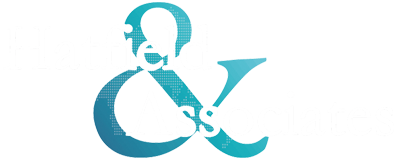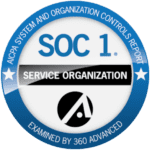Did you know that companies implementing advanced supply chain strategies can reduce operational costs by up to 15%? According to a study by the Council of Supply Chain Management Professionals (CSCMP), efficient supply chain management is a critical driver of profitability in today’s competitive market. As today’s global economy continues to evolve, businesses of all sizes are increasingly searching for ways to optimize their supply chain operations and reduce costs. With tighter budgets and greater pressures from stakeholders, the ability to effectively manage resources to achieve maximum efficiency is becoming even more paramount.
Fortunately, there are several tried-and-true best practices that any organization can utilize to streamline their supply chains and remain profitable over the long haul.
Let’s take a look at five key tips that you can use right away to begin optimizing your supply chain strategy today!
1. Analyzing Current Supply Chain Processes
To optimize any supply chain, the first step is thorough analysis. It involves evaluating every part of your supply chain – from procurement to production, warehousing to distribution, and even customer service. Look for areas where delays, waste, or inefficiencies occur.
Does your procurement process result in stockouts or excess inventory? Are there bottlenecks in production? Does your customer service department constantly field complaints about late deliveries? These are potential areas of weakness that, once addressed, can significantly improve the performance of your supply chain.
Remember, data is your friend in this process. Utilize analytics tools to spot patterns and trends that may not be immediately apparent. According to a report by the MIT Center for Transportation & Logistics, companies that use data analytics to identify inefficiencies can reduce supply chain costs by 10-20% (source).
2. Implement a “Just In Time” (JIT) System for Inventory Management
Adopting a “Just In Time” (JIT) approach to inventory management can be instrumental in driving supply chain efficiency. Originating from the Japanese manufacturing industry, this method involves receiving goods only as they are needed, reducing inventory costs and waste.
Transitioning to a JIT system allows organizations to align their production process more closely with customer demand. It means holding minimal inventory, reducing storage costs, and minimizing the risk of holding obsolete stock. However, it’s essential to note that successful JIT implementation requires accurate demand forecasting and dependable suppliers to avoid stockouts.
Remember, in a JIT system, the aim is not just to reduce inventory but to have the right product available at the right time, meeting customer demand without delay. The Harvard Business Review reports that JIT systems can reduce inventory holding costs by 25-30% (source).
3. Enhance Collaboration Among Suppliers, Logistics Providers, and Retailers
Strengthening relationships and improving collaboration among suppliers, logistics providers, and retailers is crucial for supply chain optimization. By fostering open communication channels and employing technologies that support real-time data sharing, organizations can ensure smoother coordination of processes.
It facilitates quick decision-making, promotes transparent operations, and helps anticipate and mitigate potential supply chain disruptions. Regular meetings, collaborative planning, and shared KPIs can help to align everyone’s goals and objectives.
Moreover, this level of collaboration assists in developing a sense of mutual trust and understanding of each other’s roles, ultimately leading to a more resilient, efficient, and effective supply chain. According to a study by the International Journal of Production Economics, effective supplier collaboration can improve on-time delivery rates by 20% (source).
4. Leverage Technology to Track and Monitor Supply Chain Performance in Real Time
In today’s digital age, exploiting technology to monitor supply chain performance in real-time is not only beneficial but often essential. Advanced software solutions, artificial intelligence (AI), and Internet of Things (IoT) devices can offer real-time visibility into every facet of the supply chain, tracking goods from production to delivery.
Standardized dashboards can provide an instant snapshot of key performance indicators, helping identify issues and inefficiencies as they arise. Real-time tracking enables immediate responses to disruptions, minimizing delays and downstream impacts.
Furthermore, predictive analytics, empowered by machine learning algorithms, can anticipate potential issues before they occur, allowing for proactive measures to be taken. Embracing technology for real-time supply chain monitoring can lead to improved operational efficiency, cost savings, and improved customer satisfaction.
Remember, a well-monitored supply chain is a well-optimized supply chain. A report by McKinsey & Company highlights that companies using real-time supply chain monitoring tools can reduce logistics costs by up to 15% (source).
5. Consider Outsourcing Non-essential Activities
Outsourcing non-essential activities like packing and shipping can be a strategic move to curtail costs and simplify operations. These tasks, while important, can consume a significant amount of resources and time, which could be better employed in core business activities.
By entrusting these responsibilities to third-party logistics providers (3PLs), organizations can capitalize on their expertise, technology, and infrastructure. Furthermore, 3PLs offer scalability, allowing businesses to manage peak seasons more effectively without investing in additional permanent resources.
Besides reducing overhead costs, outsourcing can also lead to improved service quality, as these specialist providers have the expertise to handle complexities and meet delivery timelines consistently. However, it’s crucial to choose a reliable outsourcing partner who aligns with your business values and can meet your service level expectations.
Remember, successful outsourcing hinges on establishing a mutually beneficial relationship, characterized by transparency, trust, and ongoing communication. Research from the Journal of Business Logistics shows that outsourcing logistics activities can reduce overall supply chain costs by 10-15% (source).
In Conclusion
The success of a supply chain relies heavily on efficiency and effectiveness. To thrive in today’s competitive marketplace, companies must reassess their current processes to identify areas of waste and weakness and develop a comprehensive strategy to address them.
Utilizing timely information technologies such as “Just In Time” inventory management can ensure that consumers get what they need when they need it. Collaboration among all stakeholders – suppliers, logistics providers, and retailers – is essential for streamlining operations and delivering superior customer service. Furthermore, considering outsourcing non-essential activities can help reduce costs and make operations smoother and more efficient.
With proper planning and execution, organizations can leverage these tactics to strengthen their supply chain operations so they remain competitive in the global market. Click here to learn more about optimizing your business’s supply chain or contact our experts today!
About Us
Are you looking for an all-in-one solution for your transportation management and freight audits in one place? Look no further than Hatfield & Associates.
We are one of the best supply chain management companies in Memphis, TN, dedicated to reducing transportation costs for our clients without compromising on quality or efficiency.
Our services include logistics support, freight pay and audits, supply chain optimization, and more. You can reach us at (901) 507-2615 or fill out our contact form to learn more.



